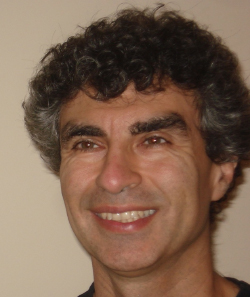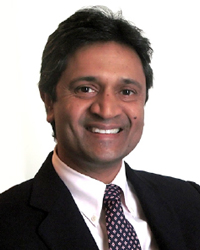Plenaries
Note that all plenary presentations will be video-recorded and available on the Signal Processing Society SigView online training database in late 2015.

Deep Learning
Yoshua Bengio
Professor, University of Montreal
Department of Computer Science and Operations Research
Canada Research Chair in Statistical Learning Algorithms
TIME
Monday September 28, 2015
-
Abstract & Biography
+Abstract
Although neural networks have long been considered lacking in theory and much remains to be done, theoretical evidence is mounting and will be discussed, to support distributed representations, depth of representation, the non-convexity of the training objective, and the probabilistic interpretation of learning algorithms (especially of the auto-encoder type, which were lacking one). Empirical work in a variety of applications has demonstrated that, when well trained, such deep architectures can be highly successful, remarkably breaking through previous state-of-the-art in many areas, including speech recognition, object recognition, language models, and transfer learning. This talk will summarize the advances that have made these breakthroughs possible, and end with questions about some major challenges still ahead of researchers in order to continue our climb towards AI-level competence.
Biography
Yoshua Bengio received a PhD in Computer Science from McGill University, Canada in 1991. After two post-doctoral years, one at M.I.T. with Michael Jordan and one at AT&T; Bell Laboratories with Yann LeCun and Vladimir Vapnik, he became professor at the Department of Computer Science and Operations Research at Université de Montréal. He is the author of two books and more than 300 publications, the most cited being in the areas of deep learning, recurrent neural networks, probabilistic learning algorithms, natural language processing and manifold learning. He is among the most cited Canadian computer scientists and is or has been associate editor of the top journals in machine learning and neural networks.
Since '2000 he holds a Canada Research Chair in Statistical Learning Algorithms, since '2006 an NSERC Industrial Chair, since '2005 his is a Fellow of the Canadian Institute for Advanced Research and since 2014 he co-directs its program focused on deep learning. He is on the board of the NIPS foundation and has been program chair and general chair for NIPS. He has co-organized the Learning Workshop for 14 years and co-created the new International Conference on Learning Representations.
His current interests are centered around a quest for AI through machine learning, and include fundamental questions on deep learning and representation learning, the geometry of generalization in high-dimensional spaces, manifold learning, biologically inspired learning algorithms, and challenging applications of statistical machine learning.

Advances in Computational Imaging
Shree K. Nayar
T. C. Chang Professor of Computer Science
Columbia University
TIME
Tuesday September 29, 2015
-
Abstract & Biography
+Abstract
Computational imaging uses new optics to capture a coded image, and an appropriate algorithm to decode the captured image. This approach of manipulating images before there are recorded and processing recorded images before they are presented has three key benefits.
First, it enables us to implement imaging functionalities that would be difficult, if not impossible, to achieve using traditional imaging. Second, it can be used to significantly reduce the hardware complexity of an imaging system. Lastly, under appropriate imaging conditions, it allows us to break the limits of traditional imaging. In this talk, I will show recent examples of cameras that demonstrate these benefits.
Biography
Shree K. Nayar is the T. C. Chang Professor of Computer Science at Columbia University. He heads the Columbia Vision Laboratory (CAVE), which develops advanced computer vision systems. His research is focused on three areas - the creation of novel cameras that provide new forms of visual information, the design of physics based models for vision and graphics, and the development of algorithms for understanding scenes from images. His work is motivated by applications in the fields of digital imaging, computer graphics, robotics and human-computer interfaces.
Nayar received his PhD degree in Electrical and Computer Engineering from the Robotics Institute at Carnegie Mellon University. For his research and teaching he has received several honors including the David Marr Prize (1990 and 1995), the David and Lucile Packard Fellowship (1992), the National Young Investigator Award (1993), the NTT Distinguished Scientific Achievement Award (1994), the Keck Foundation Award for Excellence in Teaching (1995), the Columbia Great Teacher Award (2006), and the Carnegie Mellon Alumni Achievement Award (2009). For his contributions to computer vision and computational imaging, he was elected to the National Academy of Engineering in 2008, the American Academy of Arts and Sciences in 2011, and the National Academy of Inventors in 2014.

Challenges and Opportunities in Biological Imaging
Michael Unser
Professor, École Polytechnique Fédérale de Lausanne
Biomedical Imaging Group
TIME
Wednesday, September 30, 2015
-
Abstract & Biography
+Abstract
While the major achievements in medical imaging can be traced back to the end the 20th century, there are strong indicators that we have recently entered the golden age of cellular/biological imaging. The enabling modality is fluorescence microscopy which results from the combination of highly specific fluorescent probes (Nobel Prize 2008) and sophisticated optical instrumentation (Nobel Prize 2014). Modern microscopy centers are providing biologists with unprecedented amounts of data in 3D + time.
To address the computational aspects, two nascent fields have emerged in which image processing is expected to play a significant role. The first is “digital optics” where the idea is to combine optics with advanced signal processing in order to increase spatial resolution while reducing acquisition time. The second area is “bioimage informatics” which is concerned with the development of image analysis software to make microscopy more quantitative. The key issue here is reliable image segmentation as well as the ability to track structures of interest over time. We shall discuss specific examples and describe state-of-the-art solutions for bioimage reconstruction and analysis. This will help us build a list of challenges and opportunities to guide further research in bioimaging.
Biography
Michael Unser is professor and director of EPFL's Biomedical Imaging Group, Lausanne, Switzerland. His primary area of investigation is biomedical image processing. He is internationally recognized for his research contributions to sampling theory, wavelets, the use of splines for image processing, stochastic processes, and computational bioimaging. He has published over 250 journal papers on those topics. He is the author with P. Tafti of the book “An introduction to sparse stochastic processes”, Cambridge University Press 2014.
From 1985 to 1997, he was with the Biomedical Engineering and Instrumentation Program, National Institutes of Health, Bethesda USA, conducting research on bioimaging.
Dr. Unser has held the position of associate Editor-in-Chief (2003-2005) for the IEEE Transactions on Medical Imaging. He is currently member of the editorial boards of SIAM J. Imaging Sciences, IEEE J. Selected Topics in Signal Processing, and Foundations and Trends in Signal Processing. He is the founding chair of the technical committee on Bio Imaging and Signal Processing (BISP) of the IEEE Signal Processing Society.
Prof. Unser is a fellow of the IEEE (1999), an EURASIP fellow (2009), and a member of the Swiss Academy of Engineering Sciences. He is the recipient of several international prizes including three IEEE-SPS Best Paper Awards and two Technical Achievement Awards from the IEEE (2008 SPS and EMBS 2010).
